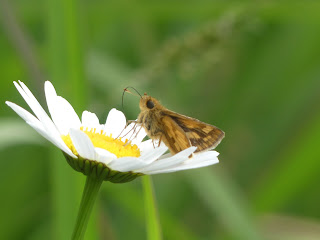Northern Harrier
Although getting pictures of them isn't easy I'm a little surprised I haven't talked about Northern Harriers before now in this blog. They are the most owl-like hawk species in our area, with a flattish owl face. This is due to how important hearing is for this hawk; similar to owls, sounds hitting their faces gets funneled to their ears, making it more likely they're going to hear small prey to pounce on.
Their most common hunting technique is to fly just a few feet above the vegetation of a meadow, veering left and right, up and down, until they hear a mouse/vole/shrew scamper through the grasses, at which point they dive on that spot. At this point they might disappear below the grassline; it's not always easy to tell whether their hunt was successful.
They are associated with Short-eared Owls, with both species spending the winters here, breeding further north, and hunting similar prey using similar techniques, frequently in the same area. And both species are roughly the same size and can put on acrobatic air shows where they both search for food while trying to intimidate their rivals. They'll even roost together in the winter, though once they start hunting it looks like it's every bird for itself. It's clear that both species are trying to fill approximately the same ecological niche.
As a hunter of (mostly) small rodents, this is another species that benefited from the banning of DDT.
 |
| January 27, 2023 at Duke Farms Photo 263365789, (c) jpviolette, some rights reserved (CC BY-NC) |



Comments
Post a Comment